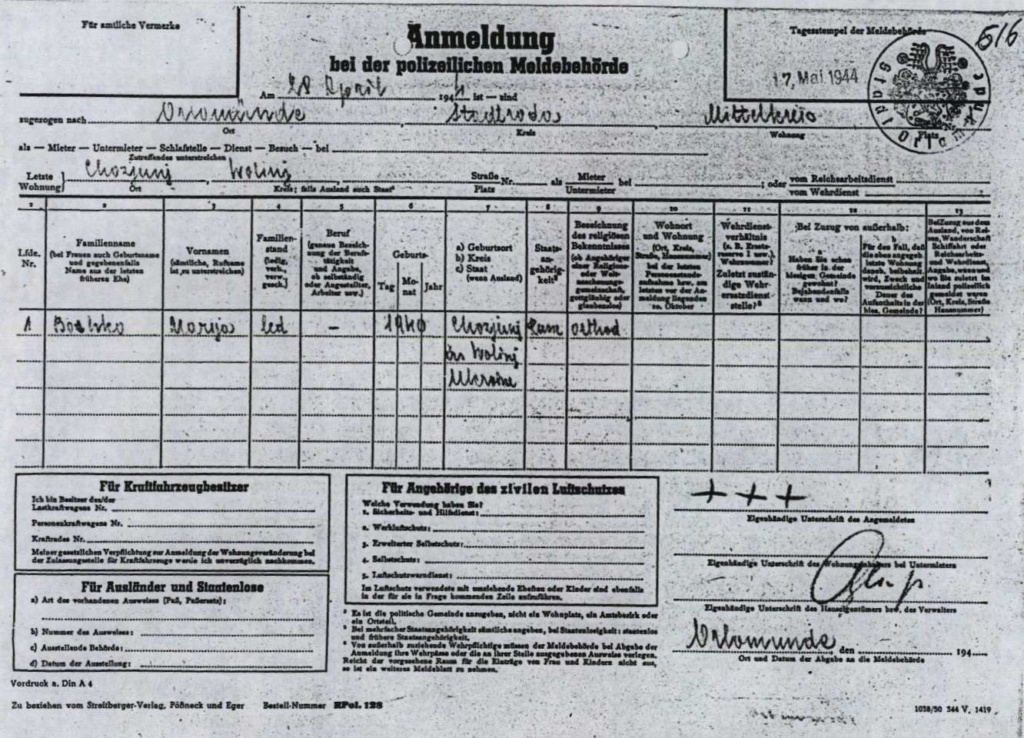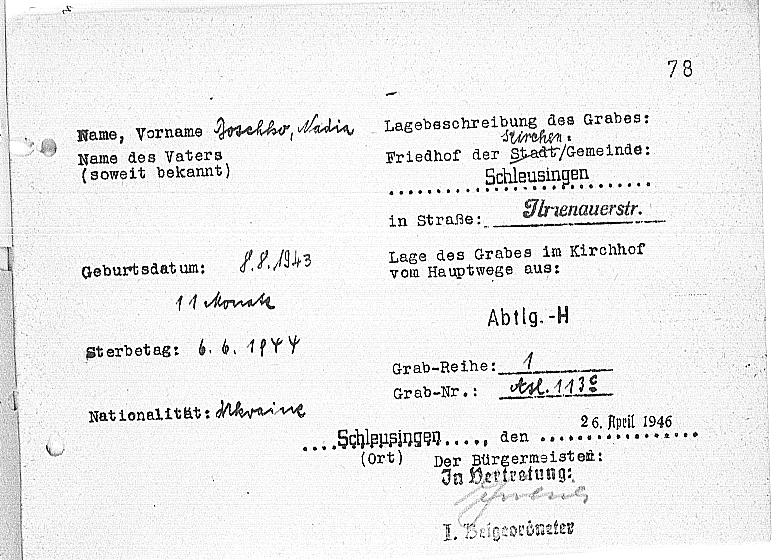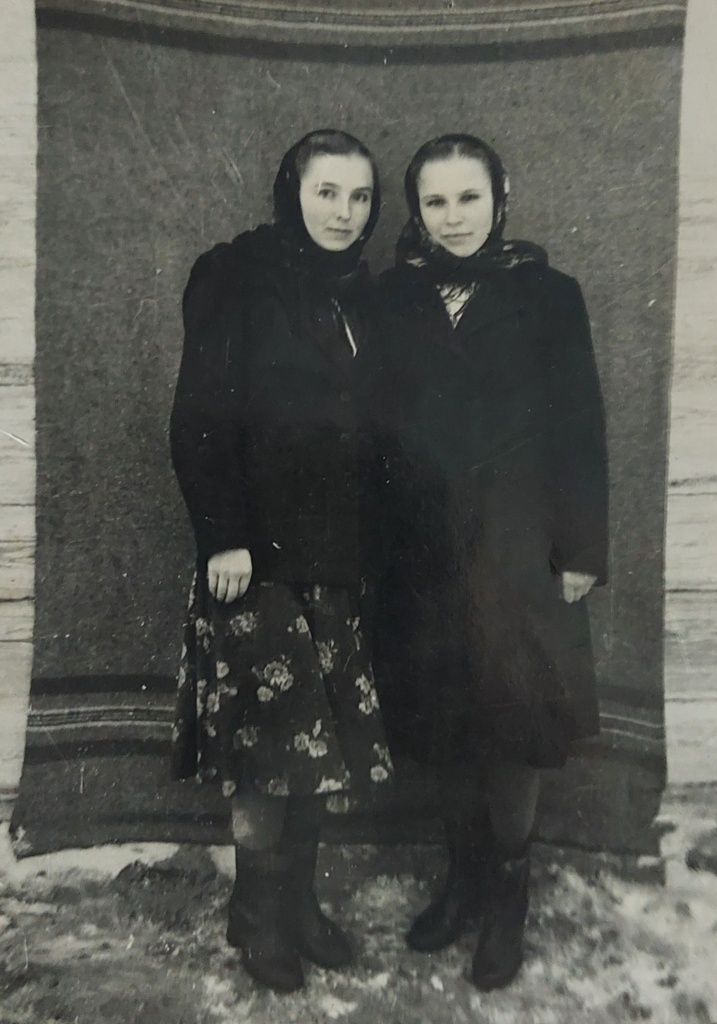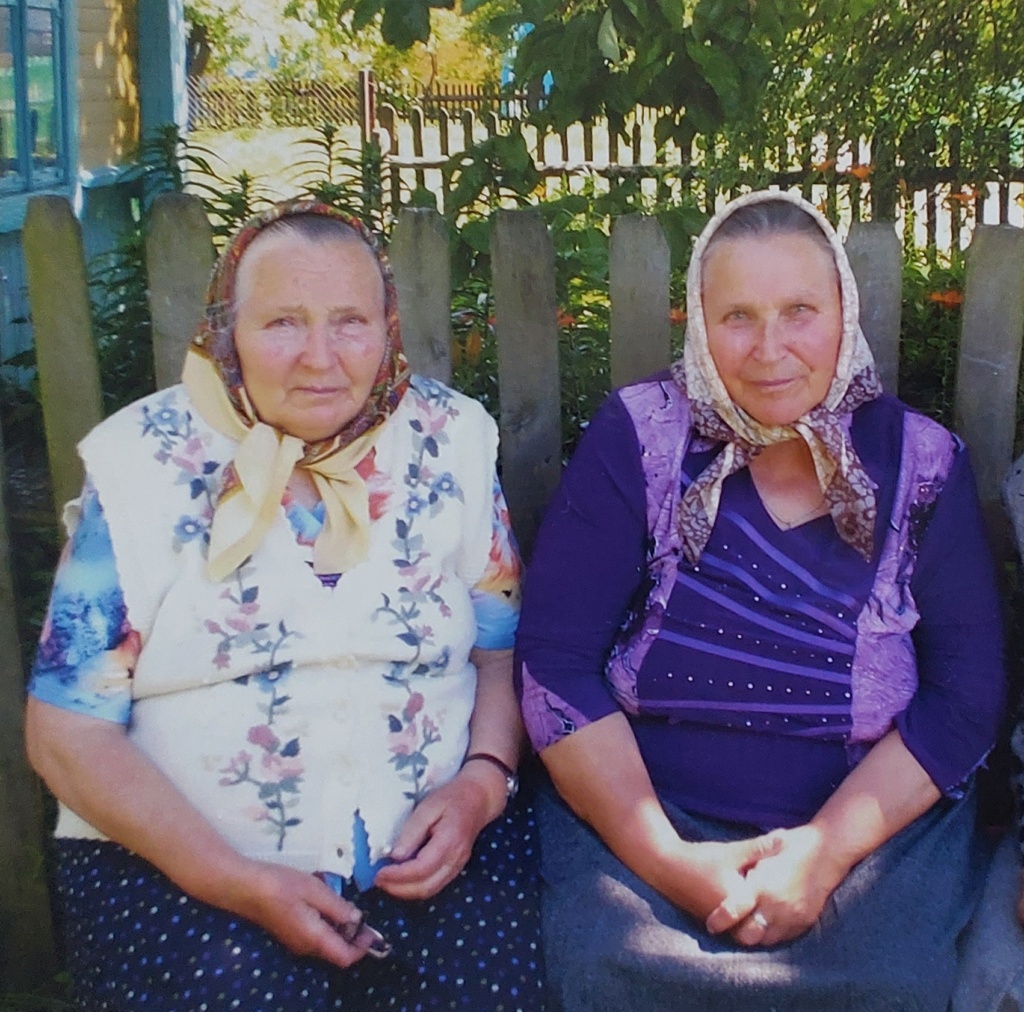Each fate of the more than 12,000 “REIMAHG” forced laborers is revealed in the reappraisal in a versatile and emotional way. Of them, the contemporary witnesses, there are hardly any survivors left today who can continue their story.
The fate of one of the deported families begins in a small village, not far from Kovel, in the Volyn Oblast. The Boschko family lives here, mother Anna (1910), father Mitodij (1910), daughters Stepanida (1932), Nadjeschda (1943) and Maria (1940) and son Ivan (1938). Maria was only four years old when she came to Kahla with her family.

The now 82-year-old Maria lives in a pretty single-family house with her daughter and grandchildren. Her memories are still very much alive, she tells me, surrounded by her family, her story.
With Operation Barbarossa, the Wehrmacht attacked the Soviet Union in June 1941. By October 1941 , they had occupied the whole of Ukraine. Partisan units were quickly formed, which were fought without consideration by the Wehrmacht. The village where the Boschko family lived also helped the partisans with supplies. As a result, all of them were deported at the end of April 1944. Her family came via Erfurt to Orlamünde, where they were quartered in the “Stern” camp for foreigners.


Due to a Ukrainian request for information and subsequent correspondence, a meeting took place spontaneously. It was an excellent fit, as at that time a member of the association had been on the road in Ukraine for five months, providing humanitarian aid. In talks with the Lviv-based association, it was quickly agreed on a further, close cooperation. This association is committed to the victims of World War II and its repression during the communist era. This also affected former Ukrainian forced laborers who were in Kahla.
Father Mitodij and mother Anna worked on the Walpersberg, while the eldest daughter Stepanida took care of her siblings.
The family’s work assignment on the Walpersberg ended on 31 May 1944, when they were transferred from Orlamünde to Suhl and made available to the local employment office.
Of these, father, mother, son Ivan, daughter Stepanida and Maria are employed as Eastern workers in the “Zieh- und Stanzwerk GmbH”, an ammunition factory.
As an independent company, the plant belonged to the large armaments group “Kopp & Co. m.b.H. Berlin”. The Suhl armaments factory produced infantry ammunition from 1937 to 1945.

(Aerial reconnaissance photo, April 1945)
More than 1,400 foreign forced laborers work in the ammunition factory, working 66 hours a week in day shifts and 55 hours a night. For the Eastern workers, 2 camps had been built especially near the factory, in which they lived crammed together.
As in Kahla, the living conditions here are very bad. Maria reports that she was constantly hungry as a child. Their work as a 4-year-old was to sort the finished ammunition standing on a wooden box.
In June 1944, her sister Nadjezhda, just 11 months old, died of typhoid fever. She was buried in the cemetery in Schleusingen, where her grave still exists today.

With the arrival of the Americans on April 6, 1945, the factory comes to a standstill and the forced laborers are free. The American army offers the family the opportunity to emigrate to the United States, but Stepanika refuses and returns to Ukraine with her mother, sister Maria and brother Ivan. The way home is arduous and long for the family. At the railway station of Lviv, Ukraine, they lose their luggage and have to walk the last part of their journey. Her father Mitodij joins her a few months later. The family is very lucky on their return, as they were not interrogated by a filtration commission of the Soviet Army. As happened to many other people who wanted to return to their homeland, but often ended up in a “gulag”.

Maria and Stepanika are doing well, despite their age.
